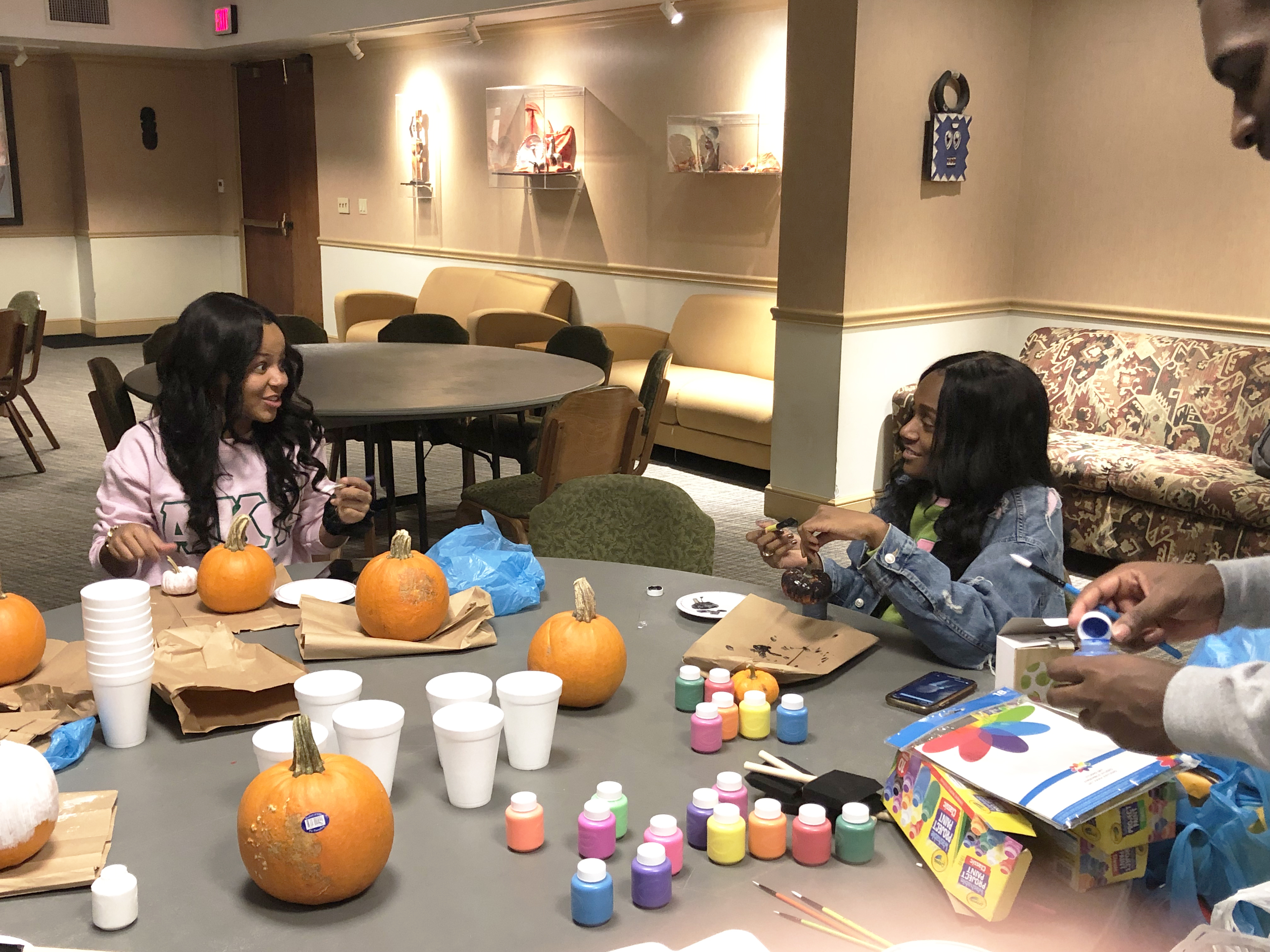
By Seth Culp-Ressler | Asst. Features Editor
This past Sunday The Duke got a behind the scenes peek at the Pittsburgh Zoo, all in hopes of gaining a little bit of insight as to what goes down on the other side of the fence at the Burgh’s very own menagerie.
The tour, a University-sponsored get away, drew a group of 60 or so Duquesne students, and even a few faculty, all of whom were looking forward to spending the gorgeous autumn day learning about some amazing animals. The tour itself, which had to be split into three groups due to the sheer number of attendants, focused on three specific animals: lions, tigers and giraffes.
Erik Garrett, Duquesne communications professor and author of Why Do We Go to the Zoo?: Communication, Animals, and the Cultural-Historical Experience of Zoos, said that this kind of tour and educational opportunity is really a modern concept when it comes to zoos. He also attended Sunday’s trip.
“[Zoos] have gone from being spots and places for merely the purpose of displaying animals for entertainment, to now also being education centers and sources for conservation research around the world. So that is the important role that zoos play today, that beyond the display aspect, but also to educate the general public,” Garrett said.
Christine Noel, our group’s tour guide for the day, led us to the far end of the park, for our first stop. Stepping out onto a platform right next to the enclosure, we waited in hopes of enticing one of its occupants to come closer. But Lewis, an eight-year-old Masai Giraffe who towered over the ground below, was having none of it. As Noel said, this was mainly due to his fellow giraffe companion, a seven-year-old female named Sox.
“Right now he needs to decide whether girls or us are more interesting, and it’s a tough call,” Noel joked. “It’s a tough call, especially during certain times. She does not seem to think that he needs her attention right now, but we’ll see what he decides to do. We might see some interesting behaviors.”
As it turned out, the only behaviors that interested Lewis were his repeated unsuccessful attempts to win over Sox. Ironically, as Noel explained, Sox was on birth control due to the zoo’s desires to keep her from becoming pregnant. Lewis’ advances were no doubt in vain. So, despite over ten minutes of calling and waiting, it was clear that petting giraffes was not on the day’s agenda.
The next stop on the tour was the African Lions, the first of the two big cats we would be visiting. The group was led through a gate into the lions’ indoor living quarters, where they reside if they are not outside. A large fridge stood against the wall opposite the cages, filled with slabs of meat and quite a few large bones.
The zoo’s two male lions, brothers Ajani and Razi, were inside at the time. Massive creatures, with golden flowing manes and paws the size of dinner plates, the brothers paced within their cage, wary of the newfound visitors. The zoo also has two sisters, but they were outside on display. As Noel explained, this separation of the males and females, as well as the partially covered fencing within the indoor cage, comes from the brothers’ less-than-sociable natures.
“The sisters were raised by keepers here, and the brothers were raised by their mother – in a zoo – but by their mom,” she said. “So having people kind of in their personal area is a little bit more upsetting to them than it is to the girls.”
As the group left the enclosure one of the brothers did let out a few farewell snarls. Friendly or not, he was certainly trying to tell us something. Maybe he enjoyed the company after all.
Our final destination was the Amur (formally Siberian) Tigers. Noel explained that the name shift has paralleled the species’ rapidly declining numbers. Nowadays the tigers are really only found around the area surrounding the Amur River, not in Siberia. Their enclosure is far more open than the lions’ because, coming from Russia and China, they are much more acclimated to the cold.
For a minute or so after our arrival the tigers were keeping to themselves, staying back in their rooms. Before too long the zoo’s youngest tiger, a male named Pavel, emerged. Even though at just over two years old he could be considered a cub, Pavel was certainly not lacking in presence. With his requisite stripes, not to mention the quite visibly intimidating muscles, he was a formidable animal. After presenting himself he sprawled out on the other side of the fence, basking in the attention. A cat is a cat, after all. As Noel said, this is about as close as any keepers get to the tigers. All interaction, understandably, is done through the fence.
“[The keepers] work through the fencing with them, and they [the tigers] know a lot of commands that mostly help to take care of a lot of veterinary procedures,” she said. “So they can have them open their mouth to have their teeth checked out, they’ll stand up with their paws against the fence to have their nails examined, the pads of their feet examined, they’ll lean into the fence to receive hand injections.”
Surely some cat owners would be jealous of such training. With that, however, the tour reached its conclusion. It was certainly not all encompassing, but for only an hour’s worth of time a lot of interesting information was put forth. As Garett pointed out, having access like this is a unique opportunity for anyone, and he was glad the University put on such a trip for their students.
“It was a wonderful chance for a large number of students to walk around the Zoo, and the organizers did a great job. It is really neat to get a chance to go behind the scenes, that’s something that not everybody really has a chance to do, and understand the workings-on of modern zoos, especially the world-class zoo we have here in Pittsburgh.”






